Eduvation Blog
Friday, September 24, 2010 | Category: PSE Fairs
Recruiting from India – 2010
I was in Brampton Ontario for the 4th annual Synergy conference, focused on Canada-India educational initiatives. Looking around the room, I saw about 150 delegates in attendance, including representatives from dozens of colleges and universities across Canada (and some familiar faces in particular from Algonquin, CBU, Concordia, Fanshawe, Trinity Western, uSask, UWO and York.)
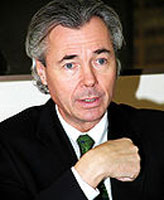 The conference was opened by Hon. Pierre Pettigrew, who chairs the Canada India Education Council (CIEC), and he began by telling us about the unique nature of Canada, as one country comprised of several nations. He reminded us that by 2050, six of the largest economies of the world will be Asian. Our governments have to put a lot of money into health, but education is far more important for the future of our society — it is what we owe, not to those who have contributed to our society, but to those who will contribute to it in the future.
The conference was opened by Hon. Pierre Pettigrew, who chairs the Canada India Education Council (CIEC), and he began by telling us about the unique nature of Canada, as one country comprised of several nations. He reminded us that by 2050, six of the largest economies of the world will be Asian. Our governments have to put a lot of money into health, but education is far more important for the future of our society — it is what we owe, not to those who have contributed to our society, but to those who will contribute to it in the future.
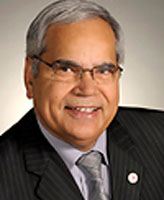 Then Kam Rathee, CIEC President, expressed the hope that this council, like education, could serve as a bridge between cultures and countries. He described the plan to create a mirror image organization in India to link the CIEC’s efforts across the Pacific. Husain Neemuchwala, CIEC’s CEO, elaborated on the plan to establish three offices in Mumbai, and touched on the government of Ontario’s objective to increase international student enrollment, especially from India. CMEC is working with Ottawa to reduce barriers to Indian students.
Then Kam Rathee, CIEC President, expressed the hope that this council, like education, could serve as a bridge between cultures and countries. He described the plan to create a mirror image organization in India to link the CIEC’s efforts across the Pacific. Husain Neemuchwala, CIEC’s CEO, elaborated on the plan to establish three offices in Mumbai, and touched on the government of Ontario’s objective to increase international student enrollment, especially from India. CMEC is working with Ottawa to reduce barriers to Indian students.
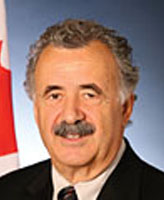 Senator Consiglio Di Nino, the former chair of the standing committee on Foreign Affairs, delivered the opening keynote remarks. He stated from the outset that the CIEC is one of the most important initiatives in Canada’s relationship with India. He sees plenty of room for improvement — “the two countries have woken up, but they still need to get out of bed.” Up until 2010, we have issued about 8,000 student visas — “shamefully” few. The Indian middle class is larger than the entire population of the EU, and the university student population will double to 30 million in several years — there are immense opportunities for Canadian education.
Senator Consiglio Di Nino, the former chair of the standing committee on Foreign Affairs, delivered the opening keynote remarks. He stated from the outset that the CIEC is one of the most important initiatives in Canada’s relationship with India. He sees plenty of room for improvement — “the two countries have woken up, but they still need to get out of bed.” Up until 2010, we have issued about 8,000 student visas — “shamefully” few. The Indian middle class is larger than the entire population of the EU, and the university student population will double to 30 million in several years — there are immense opportunities for Canadian education.
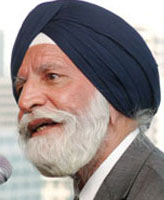 Concordia professor emeritus Balbir Sahni delivered the inaugural address on cross-border education andthe new Bill 57, which will pave the way for foreign universities in India (but has been deferred to the winter session of India’s parliament). Although India has committed to spend 5% of GDP on education, only 0.37% is spent on higher education domestically, while $13 billion is spent by students going abroad. There is a significant deficiency in higher education capacity in India. Currently, India is the source of 5% of all international students worldwide (15% come from China), and most study in the US, UK, France, Germany and Australia. Canada attracts just 4% of international students. Since 2000, the flow of Indian students into Canada has increased significantly, from 1,000 to more than 6,000 students. Sahni sees great opportunity for joint grad studies, twinning of institutions, industry linkages, vocational training collaborations, and public-private partnerships. India will benefit from the establishment of foreign universities in India, so long as fees are affordable for Indian families, and overly generous salaries do not drain faculty from existing institutions in India.
Concordia professor emeritus Balbir Sahni delivered the inaugural address on cross-border education andthe new Bill 57, which will pave the way for foreign universities in India (but has been deferred to the winter session of India’s parliament). Although India has committed to spend 5% of GDP on education, only 0.37% is spent on higher education domestically, while $13 billion is spent by students going abroad. There is a significant deficiency in higher education capacity in India. Currently, India is the source of 5% of all international students worldwide (15% come from China), and most study in the US, UK, France, Germany and Australia. Canada attracts just 4% of international students. Since 2000, the flow of Indian students into Canada has increased significantly, from 1,000 to more than 6,000 students. Sahni sees great opportunity for joint grad studies, twinning of institutions, industry linkages, vocational training collaborations, and public-private partnerships. India will benefit from the establishment of foreign universities in India, so long as fees are affordable for Indian families, and overly generous salaries do not drain faculty from existing institutions in India.
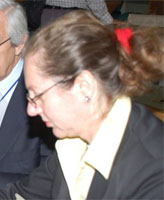 Claude Bibeau of DFAIT spoke about the MOU on Higher Education Cooperation signed between Canada and India at the G20 summit in Toronto. The MOU creates a framework for exchanges, awards, partnerships and mobility of students and scholars between institutions in the two countries. Meetings with India are swift and very businesslike, but a challenge is that Canadian education has very decentralized budgets, and it takes significant time to put millions of dollars on the table. The UK and Australia have opened well-funded offices in India, and can negotiate in a coordinated and centralized way. DFAIT has a $12 million scholarship program, and has been allocating 50 scholarships to Indian grad students studying in Canada, as well as the Vanier scholarships and the new $70,000 Banting fellowship. 73,000 students from Canada and around the world participate in the International Youth Program every year
Claude Bibeau of DFAIT spoke about the MOU on Higher Education Cooperation signed between Canada and India at the G20 summit in Toronto. The MOU creates a framework for exchanges, awards, partnerships and mobility of students and scholars between institutions in the two countries. Meetings with India are swift and very businesslike, but a challenge is that Canadian education has very decentralized budgets, and it takes significant time to put millions of dollars on the table. The UK and Australia have opened well-funded offices in India, and can negotiate in a coordinated and centralized way. DFAIT has a $12 million scholarship program, and has been allocating 50 scholarships to Indian grad students studying in Canada, as well as the Vanier scholarships and the new $70,000 Banting fellowship. 73,000 students from Canada and around the world participate in the International Youth Program every year
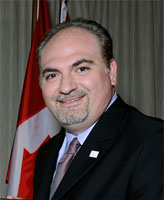 Jean-Philippe Tachdjian of Edu-Canada / DFAIT summarized recent developments in India, and the negative incidents in Australia which led to considerable bad press. The UK high commission was subsequently overwhelmed with Indian requests for study permits, so Canada has become the next destination of choice. “Our competitors have stumbled,” but now we need to be cautious that we learn from the Australian example, and attract the right students and potential migrants to Canada. The 2009 closure of CECN has led to a more direct role for DFAIT in promotion activities, but has meant the closure of 3 offices in India that were convenient and well-staffed. DFAIT hasn’t done nearly enough to promote the EduCanada brand, but clearly needs more resources. Nonetheless, we have seen 125% growth in enrollments from India in the past two years. DFAIT urges Canadian institutions to share their alumni lists for India with the Canadian High Commission, because alumni will be our best ambassadors. Institutions can access more information at theEduCanadaPro website.
Jean-Philippe Tachdjian of Edu-Canada / DFAIT summarized recent developments in India, and the negative incidents in Australia which led to considerable bad press. The UK high commission was subsequently overwhelmed with Indian requests for study permits, so Canada has become the next destination of choice. “Our competitors have stumbled,” but now we need to be cautious that we learn from the Australian example, and attract the right students and potential migrants to Canada. The 2009 closure of CECN has led to a more direct role for DFAIT in promotion activities, but has meant the closure of 3 offices in India that were convenient and well-staffed. DFAIT hasn’t done nearly enough to promote the EduCanada brand, but clearly needs more resources. Nonetheless, we have seen 125% growth in enrollments from India in the past two years. DFAIT urges Canadian institutions to share their alumni lists for India with the Canadian High Commission, because alumni will be our best ambassadors. Institutions can access more information at theEduCanadaPro website.
 Faisal Beg, the Canadian Trade Commissioner in New Delhi, presented the latest on India’s Bill 57, which was drafted in 2004 and is still being deliberated. There are over 18,000 PSE institutions in India, and about 400 universities, and yet the participation rate is less than 12%, which is about half of the world average. There are a number of foreign providers operating in India already, but without an effective regulatory regime to maintain standards. The proposed bill will allow institutions with more than 20 years standing to apply, but they will not be permitted to offer distance education, and must deliver programs in India that are consistent with the programs in their home countries. Existing foreign operators in India will have to reapply under the new regime. No repatriation of funds will be permitted: 75% of funds can be ploughed back into operations, and 25% must be deposited as “corpus” with the Indian government as a form of collateral. (In effect, under this bill there will be every financial incentive for Canadian institutions to recruit students away from India, but a financial disincentive to establish any satellite campuses in India.)
Faisal Beg, the Canadian Trade Commissioner in New Delhi, presented the latest on India’s Bill 57, which was drafted in 2004 and is still being deliberated. There are over 18,000 PSE institutions in India, and about 400 universities, and yet the participation rate is less than 12%, which is about half of the world average. There are a number of foreign providers operating in India already, but without an effective regulatory regime to maintain standards. The proposed bill will allow institutions with more than 20 years standing to apply, but they will not be permitted to offer distance education, and must deliver programs in India that are consistent with the programs in their home countries. Existing foreign operators in India will have to reapply under the new regime. No repatriation of funds will be permitted: 75% of funds can be ploughed back into operations, and 25% must be deposited as “corpus” with the Indian government as a form of collateral. (In effect, under this bill there will be every financial incentive for Canadian institutions to recruit students away from India, but a financial disincentive to establish any satellite campuses in India.)
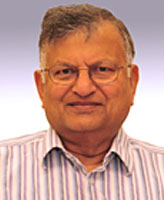 UWO’s Dr. Lalu Mansinha gave a progress report on the Ontario-Maharashtra-Goa student exchange partnership, a two-way exchange of about 75 grad and undergrad students each year. The Ontario Council of Academic VPs (OCAV) runs similar exchanges to Germany, China and France, under the auspices of Ontario Universities International (OUI). The exchange is about the reciprocal flow of knowledge — not just disciplinary expertise, but cultural understanding as well. About 50 students receive a stipend each year, but a significant benefit is that international tuition fees are waived. India has many institutions, but they are also often very large: the University of Pune, the “Oxford of the East”, has more than 400,000 students. There is now growing interest in the idea of faculty exchange and research collaboration.
UWO’s Dr. Lalu Mansinha gave a progress report on the Ontario-Maharashtra-Goa student exchange partnership, a two-way exchange of about 75 grad and undergrad students each year. The Ontario Council of Academic VPs (OCAV) runs similar exchanges to Germany, China and France, under the auspices of Ontario Universities International (OUI). The exchange is about the reciprocal flow of knowledge — not just disciplinary expertise, but cultural understanding as well. About 50 students receive a stipend each year, but a significant benefit is that international tuition fees are waived. India has many institutions, but they are also often very large: the University of Pune, the “Oxford of the East”, has more than 400,000 students. There is now growing interest in the idea of faculty exchange and research collaboration.
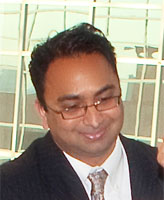 Husain Neemuchwala returned to the podium to tell us how to “Maximize Your ROI(Return on India)” with some out of the box recruitment solutions. Right now we invest about $1 million as a country on a market that brings us $6.5 billion — this is inadequate. CIEC recommends pre-planned high school drop-in visits, alumni networking receptions, agents, fairs, and social networking — not just Facebook but also Orkut, Ishstyle and others. Over 100,000 Indians currently go overseas to study. About a third of a billion people are under age 30. CIEC is an event-driven not-for-profit organization that currently has 12 members (including UWO, uSask, uRegina, and Durham College), and would welcome more. It operates the Synergy conference, an Ed-Mission and “UnFairs” in India, and will open rep offices in 3 cities by 2011. It is also working to create a $1 million scholarship pool to attract Indian students. Having an “appearance” in India is not enough — Canadian institutions need an ongoing “presence” on the ground in India.
Husain Neemuchwala returned to the podium to tell us how to “Maximize Your ROI(Return on India)” with some out of the box recruitment solutions. Right now we invest about $1 million as a country on a market that brings us $6.5 billion — this is inadequate. CIEC recommends pre-planned high school drop-in visits, alumni networking receptions, agents, fairs, and social networking — not just Facebook but also Orkut, Ishstyle and others. Over 100,000 Indians currently go overseas to study. About a third of a billion people are under age 30. CIEC is an event-driven not-for-profit organization that currently has 12 members (including UWO, uSask, uRegina, and Durham College), and would welcome more. It operates the Synergy conference, an Ed-Mission and “UnFairs” in India, and will open rep offices in 3 cities by 2011. It is also working to create a $1 million scholarship pool to attract Indian students. Having an “appearance” in India is not enough — Canadian institutions need an ongoing “presence” on the ground in India.
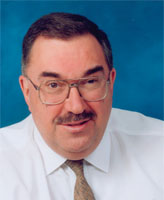 York University’s Dr. Alan Middleton urged Canadian higher education to make a lot more NOISE to gain brand awareness overseas. Despite institutional budget cuts, we need to remember that “you can’t cut your way to growth.” Increasing participation rates domestically will only hurt quality, the Canadian population is aging, government funding is dropping, and raising tuition is not sustainable. We need to stop treating education as something only for young people, and should abolish the expression “continuing education.” We should all be in the business of lifelong learning, especially in an emerging market like India. Canada is currently a tortoise moving at a snail’s pace, with a minimal market share. We can’t wait for the federal government to make the difference when education is a provincial responsibility. This isn’t just an international competition for revenue — who will be the top educational players globally in the future? We need to be oriented to the world of the future — an Asian future.
York University’s Dr. Alan Middleton urged Canadian higher education to make a lot more NOISE to gain brand awareness overseas. Despite institutional budget cuts, we need to remember that “you can’t cut your way to growth.” Increasing participation rates domestically will only hurt quality, the Canadian population is aging, government funding is dropping, and raising tuition is not sustainable. We need to stop treating education as something only for young people, and should abolish the expression “continuing education.” We should all be in the business of lifelong learning, especially in an emerging market like India. Canada is currently a tortoise moving at a snail’s pace, with a minimal market share. We can’t wait for the federal government to make the difference when education is a provincial responsibility. This isn’t just an international competition for revenue — who will be the top educational players globally in the future? We need to be oriented to the world of the future — an Asian future.
Rajiv Mathur, of Deloitte Consulting, addressed the financial and tax implications of establishing satellite campuses in India. The PSE market in India will grow to $80 billion within a few years, and there are already half a billion Indians under age 25. Salaries and consulting fees can be paid to Canadians, within certain limits, but are subject to taxes of 10-20%. There are apparently some ways to “unlock” the surplus generated in India for other purposes, Rajiv implied, but he did not share them with us.
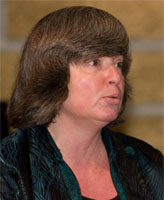 York University’s Dr. Sheila Embleton moderated an open floor discussion about Canadian institutions operating in India. Currently, virtually no-one at the conference has operations on the ground in India (except the Schulich School of Business), but several have plans to do so, including the Ivey School of Business, and Concordia U. Professionals educated in India will ultimately emigrate to Canada and other “aging” countries to meet their future labour market needs — so in effect, our institutions can consider going to India as educating future Canadians. Engineering accreditations need to be more flexible.
York University’s Dr. Sheila Embleton moderated an open floor discussion about Canadian institutions operating in India. Currently, virtually no-one at the conference has operations on the ground in India (except the Schulich School of Business), but several have plans to do so, including the Ivey School of Business, and Concordia U. Professionals educated in India will ultimately emigrate to Canada and other “aging” countries to meet their future labour market needs — so in effect, our institutions can consider going to India as educating future Canadians. Engineering accreditations need to be more flexible.
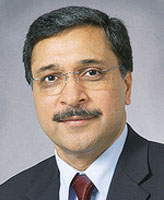 Prof. Deep Saini, the principal of uToronto Mississauga, gave us “a view from the top,” which he assured us meant “the top of his head.” He was previously involved in establishing the UAE campus for uWaterloo, and is currently helping to develop a new India strategy for the UofT. UofT is interested in becoming the “backup” research university for industry in Canada and in India, and has even contemplated a UofT Delhi. India has some outstanding institutions in specific disciplines, but not world class comprehensive institutions like UofT. UofT feels a sense of global social responsibility to affect the ethos of education in India, beyond science and technology and into liberal arts. Canada and India share an immense amount of common values as countries and societies. There is plenty of local capital available to build a campus in India, but a shortage of common purpose and governance — India can be more like a country with 1.1 billion individual goals and objectives. There is an increasing power of the private sector that is gradually affecting public sector governance, and India will likely resolve its governance issues soon.
Prof. Deep Saini, the principal of uToronto Mississauga, gave us “a view from the top,” which he assured us meant “the top of his head.” He was previously involved in establishing the UAE campus for uWaterloo, and is currently helping to develop a new India strategy for the UofT. UofT is interested in becoming the “backup” research university for industry in Canada and in India, and has even contemplated a UofT Delhi. India has some outstanding institutions in specific disciplines, but not world class comprehensive institutions like UofT. UofT feels a sense of global social responsibility to affect the ethos of education in India, beyond science and technology and into liberal arts. Canada and India share an immense amount of common values as countries and societies. There is plenty of local capital available to build a campus in India, but a shortage of common purpose and governance — India can be more like a country with 1.1 billion individual goals and objectives. There is an increasing power of the private sector that is gradually affecting public sector governance, and India will likely resolve its governance issues soon.
 Braj Sinha and Rick Butler of the Shastri Indo-Canadian Institute put forward an action plan in light of the MOU signed by Canada and India at the G20 Summit. Many of the specific initiatives articulated in the MOU are things that Shastri has been doing for decades, and they recommit themselves to doing them under the new MOU. Shastri is planning to host 8 regional workshops across Canada and India to enhance India studies in Canada and vice-versa. Shastri is also planning to launch a new web portal to engage and connect its member institutions, to include a speakers bureau, a searchable discussion forum, a broad communications channel to trumpet accomplishments, and a centralized data repository with instant reporting capacity.
Braj Sinha and Rick Butler of the Shastri Indo-Canadian Institute put forward an action plan in light of the MOU signed by Canada and India at the G20 Summit. Many of the specific initiatives articulated in the MOU are things that Shastri has been doing for decades, and they recommit themselves to doing them under the new MOU. Shastri is planning to host 8 regional workshops across Canada and India to enhance India studies in Canada and vice-versa. Shastri is also planning to launch a new web portal to engage and connect its member institutions, to include a speakers bureau, a searchable discussion forum, a broad communications channel to trumpet accomplishments, and a centralized data repository with instant reporting capacity.
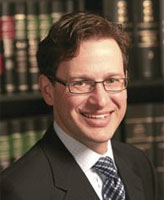 Taras Kulish, the country director for HOPE Worldwide of Canada, spoke about “educational offsets” in India. Institutions looking to educate Indians may not be addressing the question, “what are you giving back to India?” Like carbon offsets, educational offsets are a humanitarian concept to create corresponding opportunities in India for every international student coming to Canada. HOPE proposes that institutions donate $250 to an Indian institution for every fee-paying international student from India. There are currently 30 HOPE Foundation schools in India, and Canadian institutions can effectively “adopt” a HOPE Foundation school through these offsets.
Taras Kulish, the country director for HOPE Worldwide of Canada, spoke about “educational offsets” in India. Institutions looking to educate Indians may not be addressing the question, “what are you giving back to India?” Like carbon offsets, educational offsets are a humanitarian concept to create corresponding opportunities in India for every international student coming to Canada. HOPE proposes that institutions donate $250 to an Indian institution for every fee-paying international student from India. There are currently 30 HOPE Foundation schools in India, and Canadian institutions can effectively “adopt” a HOPE Foundation school through these offsets.
 Academica Group’s Ken Steele (always a good sign when I talk about myself in the third person, isn’t it?) announced a new international student prospect research study, to launch this winter in partnership with CIEC and Maple Leaf EduConnect. The ISPR will assemble an online research panel of thousands of prospective international students in India, and hundreds of high school principals and counsellors, and will gather market intelligence much like Academica’s long-running UCAS applicant study does in North America, where it is the largest and most comprehensive PSE consumer research study. The new ISPR will focus on India, and interested college, university, or government departments will be able to participate in the project steering committee and obtain high-level research results for a small nominal fee. Participating institutions will also gain exclusive access to in-depth data and a series of ongoing market research reports. (If you’re interested, please contact Bruce Thompson at bruce@academica.ca). Ken also shared interesting data drawn from Indian applicants to Canadian universities in the 2010 UCAS study — see his slides on SlideShare.
Academica Group’s Ken Steele (always a good sign when I talk about myself in the third person, isn’t it?) announced a new international student prospect research study, to launch this winter in partnership with CIEC and Maple Leaf EduConnect. The ISPR will assemble an online research panel of thousands of prospective international students in India, and hundreds of high school principals and counsellors, and will gather market intelligence much like Academica’s long-running UCAS applicant study does in North America, where it is the largest and most comprehensive PSE consumer research study. The new ISPR will focus on India, and interested college, university, or government departments will be able to participate in the project steering committee and obtain high-level research results for a small nominal fee. Participating institutions will also gain exclusive access to in-depth data and a series of ongoing market research reports. (If you’re interested, please contact Bruce Thompson at bruce@academica.ca). Ken also shared interesting data drawn from Indian applicants to Canadian universities in the 2010 UCAS study — see his slides on SlideShare.
 Harris Rosen and Alan Wolfish, from Fogler Rubinoff LLP, spoke on global change and business opportunities in private PSE. These lawyers represent private career colleges and private degree-granting institutions. Vocational training schools typically reskill disadvantaged students and give them a new lease on life. The US Department of Labour projects the top growth sectors in the next ten years to be IT, Healthcare, professional and business services. Canada could learn a lot from the US in the way it gathers national statistics. The federal/provincial division of jurisdictions affects Canada’s ability to create a national brand, and while education is a provincial jurisdiction, immigration is a federal one. Fogler Rubinoff acts as counsel for a number of foreign investors interested in acquiring Canadian career colleges.
Harris Rosen and Alan Wolfish, from Fogler Rubinoff LLP, spoke on global change and business opportunities in private PSE. These lawyers represent private career colleges and private degree-granting institutions. Vocational training schools typically reskill disadvantaged students and give them a new lease on life. The US Department of Labour projects the top growth sectors in the next ten years to be IT, Healthcare, professional and business services. Canada could learn a lot from the US in the way it gathers national statistics. The federal/provincial division of jurisdictions affects Canada’s ability to create a national brand, and while education is a provincial jurisdiction, immigration is a federal one. Fogler Rubinoff acts as counsel for a number of foreign investors interested in acquiring Canadian career colleges.
Gail Bowkett, senior policy analyst at AUCC, spoke about AUCC’s upcoming presidential mission to India. Truly global universities need to be engaged with India, and there are over 100 bilateral agreements in place. AUCC wants to build the brand of Canadian education in India, and has signed an MOU with its counterpart, the AIU. 16 university presidents will be travelling to India in November to meet with key university presidents in India, business and industry leaders.
The slide decks from the conference presentations will appear online at the CIEC website.
Post Tags: Internationalization
All contents copyright © 2014 Eduvation Inc. All rights reserved.